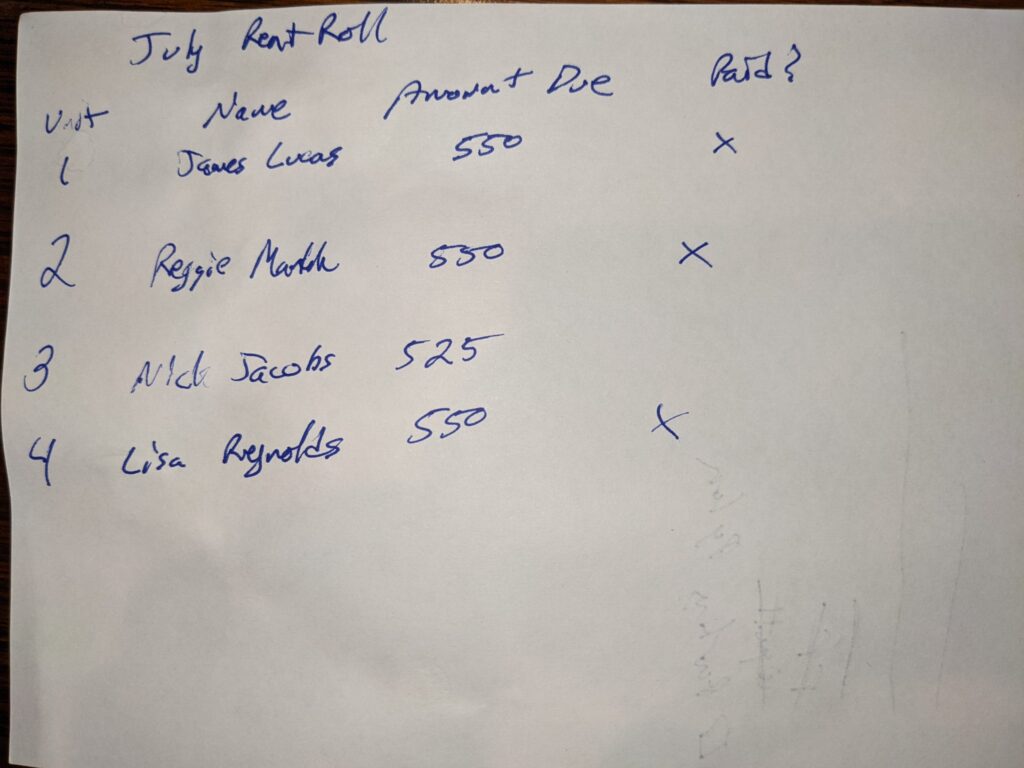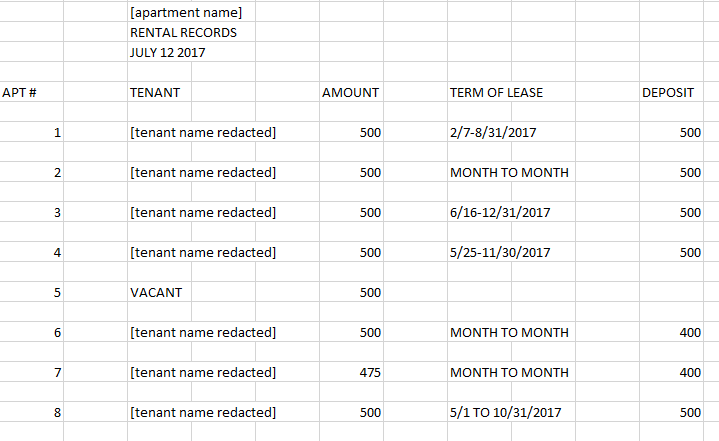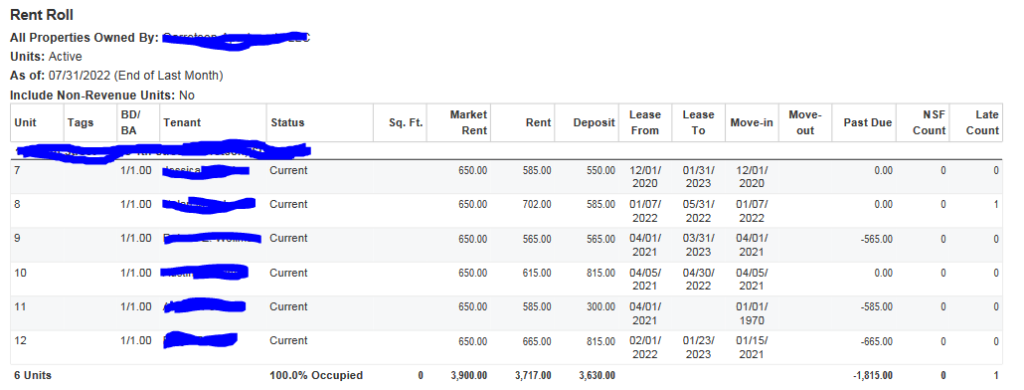First off – it’s not a rent role, it’s rent roll. The role of the rent is to compensate landlords for the use of their property as a living space.
The roll of the rent is similar to the term ‘roll call’ in that it is a register of names. It also contains other valuable bits of information. It needs to be accurate and up to date. Landlords refer to the rent roll very frequently as a gauge of the health of the property.
I already have a spreadsheet that does this.
Yes, you probably do. And that’s fine, as long as you update it monthly. Do you? The roll should have a lot of important information that helps you at a glance. If you are having trouble, this is where property management software comes in. I’ve used both Buildium and AppFolio. Another, less expensive option is Rentec Direct (none of these are sponsors, or recommended by me, just options to evaluate). If you can manage your own spreadsheet, by all means, do so.
Don’t just write it down and file it, hoping to find it again:



What is on the Rent Roll?
- The month and year
- The unit address, such as 100 N Main St, unit 101
- The unit’s size in square feet
- The unit’s bed and bathroom count
- The tenant’s name
- The rent that is currently on the lease
- The amount of security deposit on hand, as well as other deposits such as for pets
- Lease start and end date
- The tenant’s current balance – how much they owe right now
These are the basics for the rent roll. Different properties and managers might add other things, but the ones above are the essentials. Keep off any unnecessary information, such as contact info – that’s for another document – the roll needs to be a quick overview.
The Rent Roll is an Important Way to Measure the Health of the Property
At a glance, I can see a lot of important information and determine if any intervention is needed. If a tenant has a large balance, I can discuss with the property manager about why this is so. Without this information, they might continue non-paying rent for a long time without my knowledge.
The rent roll is specific to the individual property. For instance, if you own a group of 4 plexes and call them Quad Suites and they are managed by a single third party property manager, they should all be on the same rent roll, even if the 4 plexes are spread across town. The rule of thumb here is to group all properties together that would be reasonable to sell together rather than individually if you ever wanted to sell. The exception to this is if you have multiple single family properties managed by one manager – these can all be on the same rent roll, even though you might sell the houses one by one someday. We are going for efficiency here and you don’t want to have ten rent rolls all with one single house on them.
The Rent Roll is Also Important When Selling and Buying
When you are looking to sell your rental property, you need to have an accurate rent roll. It is one of the first things a buyer looks at when considering. Do you want your rent roll to be hand-written like the one above, conveying that you are unsophisticated and probably have missed details about your property? Or would you rather convey that you have everything in order and are an experienced owner?
Get in the habit of reviewing the rent rolls for each of your properties every month. This can give you the earliest sign that there is something amiss, making it much easier to correct. Always keep it up to date for that potential buyer whom you never no might be interested.

